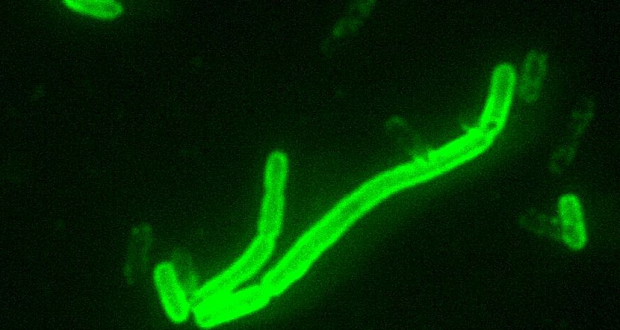YOSEMITE – Officials at Yosemite National Park announced today that another popular campground will close temporarily starting Monday, Aug. 17, in order to combat evidence of plague found in dead animals.
Plague is an infectious bacterial disease that is carried by squirrels, chipmunks and other wild rodents and their fleas. When an infected rodent becomes sick and dies, its fleas can carry the infection to other warm-blooded animals including humans.
Based on new evidence of plague activity in animals, Tuolumne Meadows Campground in Yosemite will be closed from Monday through Friday next week, from noon on Aug. 17 to noon on Aug. 21, for similar treatment. This flea treatment is commonly used to protect wildlife, pets and human health from this disease.
Yosemite National Park remains open and all other campgrounds and facilities in the park remain open to visitors.
California Department of Public Health (CDPH) Director and State Health Officer Dr. Karen Smith said that the department, working closely with Yosemite National Park, successfully reduced the risk of plague transmission at Crane Flat Campground in Yosemite. The campground, which had been closed for four nights to allow for rodent burrows to be treated for fleas, reopened Friday, Aug. 14 at noon. The treatment controlled potentially plague-infected fleas which could spread the disease to humans and other warm-blooded hosts.
As an extremely precautionary public health measure, say Park officials, the flea treatment will be applied to rodent burrows in Tuolumne Meadows Campground after two squirrels were tested and found to have died from plague.
Plague is a non-native disease most often spread to both humans and wildlife through flea bites. Treating the campground with deltamethrin will protect both human and wildlife health by killing the fleas that spread the disease.
Although the presence of plague has been confirmed at Crane Flat and Tuolumne Meadows campgrounds, the risk to human health remains low. Action to protect human and wildlife health by closing and treating campgrounds is being taken out of an abundance of caution. Campground visitors are being notified by Yosemite National Park of camp treatments, possible plague risks and provided information on how to prevent plague transmission.
An investigation into a case of human plague in California, and environmental evaluation in the Stanislaus National Forest, Yosemite National Park and the surrounding areas led to these actions.
“Although this is a rare disease, and the current risk to humans is low, eliminating the fleas is the best way to protect the public from the disease,” said Dr. Smith. “By eliminating the fleas, we reduce the risk of human exposure and break the cycle of plague in rodents at the sites. People can protect themselves from infection by avoiding any contact with wild rodents,” Dr. Smith added.
On August 6, Dr. Smith announced the department was investigating a case of human plague in California, and conducting an environmental evaluation in the Stanislaus National Forest, Yosemite National Park and the surrounding areas.
The department began investigating this incident after a child from Los Angeles County became ill and was hospitalized after visiting the Stanislaus National Forest and camping at Crane Flat Campground in Yosemite National Park in mid-July. No other members of the camping party reported symptoms and health officials are continuing to monitor the child’s family and treatment providers. The child is recovering.
“Human cases of plague are rare, with the last reported human infection in California occurring in 2006,” Dr. Smith said. “Although this is a rare disease, people should protect themselves from infection by avoiding any contact with wild rodents. Never feed squirrels, chipmunks, or other rodents in picnic or campground areas, and never touch sick or dead rodents. Protect your pets from fleas and keep them away from wild animals.”
CDPH worked closely with the Los Angeles County Department of Public Health (LACDPH), U.S. Centers for Disease Control and Prevention, Yosemite National Park and the U. S. Forest Service to investigate the source of the infection, and the patient’s travel history and activities during the incubation period.
Steps the public can take to avoid exposure to human plague include:
• Never feed squirrels, chipmunks or other rodents and never touch sick or dead rodents
• Avoid walking, hiking or camping near rodent burrows
• Wear long pants tucked into socks or boot tops to reduce exposure to fleas
• Spray insect repellent containing DEET on socks and pant cuffs to reduce exposure to fleas
• Keep wild rodents out of homes, trailers, and outbuildings and away from pets.
Early symptoms of plague include high fever, chills, nausea, weakness and swollen lymph nodes in the neck, armpit or groin. People who develop these symptoms should seek immediate medical attention and notify their health care provider that they have been camping or out in the wilderness and have been exposed to rodents and fleas. Plague is treatable in its early stages with prompt diagnosis and proper antibiotic treatment. If not treated, plague can be fatal.
In California, plague-infected animals are most likely to be found in the foothills and mountains and to a lesser extent, along the coast. Desert and Central Valley areas are considered low risk for plague. State and local health officials regularly monitor plague-prone areas by testing animals and their fleas. In 2014, non-human plague activity was detected in animals in seven counties: El Dorado, Mariposa, Modoc, Plumas, San Diego, Santa Barbara, and Sierra.
Plague is not transmitted from human to human, unless a patient with plague also has a lung infection and is coughing. There have been no known cases of human-to-human infection in California since 1924. LACDPH and CDPH believe the risk of human-to-human transmission is similarly low in this case.
The last reported cases of human plague in California occurred in 2005 and 2006 in Mono, Los Angeles and Kern counties and all three patients survived following treatment with antibiotics. Since 1970, 42 human cases of plague have been confirmed in California, of which nine were fatal.
The CDPH website has plague information, including precautions people can take to minimize their risk.
Dr. Smith talks about the investigation.




